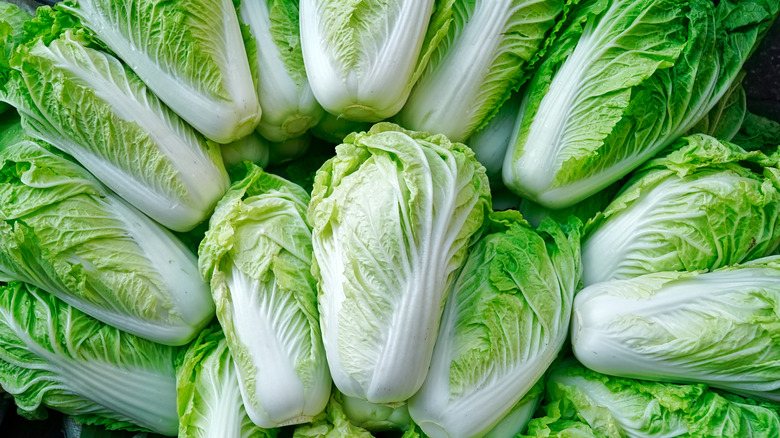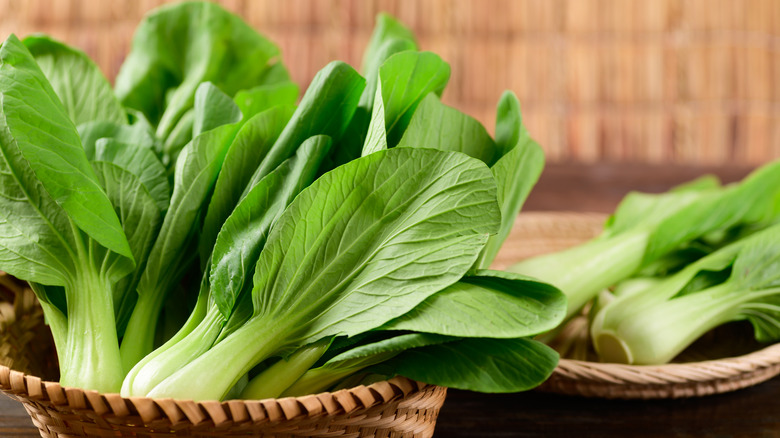Bok Choy Vs. Napa Cabbage: Is There A Nutritional Difference?
The similarities between bok choy and napa cabbage are pretty undeniable; Both members of the cruciferous vegetable family, mild flavor but with a subtle bite, refreshingly crisp with a crunch, popular in stir fries and other dishes of Asian cuisine, and, well, green (per MasterClass).
For the most part, they can be subbed in for one another depending on the recipe, but these two peas in a pod do have some differences. For starters, they are different shapes. Napa cabbage is more tightly knit and wrapped up in its own little package, while bok choy has billowy, green leaves atop a white stalk. Additionally, napa cabbage can be enjoyed raw, while bok choy puts on its best show after undergoing at least one cooking method (via Jessica Galvin).
Those differences aside, do they differ at all from a health perspective? While the two are pretty close siblings, there are some nutritional discrepancies that may lead you to choose one over the other.
Shades of green
You may have heard at some point that the darker the color of the lettuce leaf, the more nutrients it contains. Whoever told you to order that romaine or spinach salad over the iceberg wedge was spitting facts. According to the Academy of Nutrition and Dietetics, romaine lettuce has nine times more vitamin A compared to iceberg lettuce. But how do Chinese cabbages compare to this axiom? Turns out the same general rule of thumb also applies to the cruciferous klan, as it does to its close relatives in the lettuce family (via MasterClass).
With that in mind, if you take the color of both bok choy and napa cabbage into consideration, bok choy comes out deeper on the green spectrum. It is substantially higher in folate, vitamin C, vitamin A, and calcium than its cruciferous cousin napa cabbage.
One cup of cooked shredded bok choy contains 69.7 micrograms of folate, 44.2 milligrams of vitamin C, 7220 international units (IU) of vitamin A, and 158 milligrams of calcium shares the Dietitian Mom. Compare that with one cup of cooked napa cabbage, which contains 46.9 micrograms of folate, 3.49 milligrams of vitamin C, 287 IUs of vitamin A, and 31.6 milligrams of calcium (per USDA).
Filling up your plate with any kind of leafy green is always a good choice, but if you're looking to get the biggest bang for your buck in that bowl, bok choy edges out napa cabbage.

